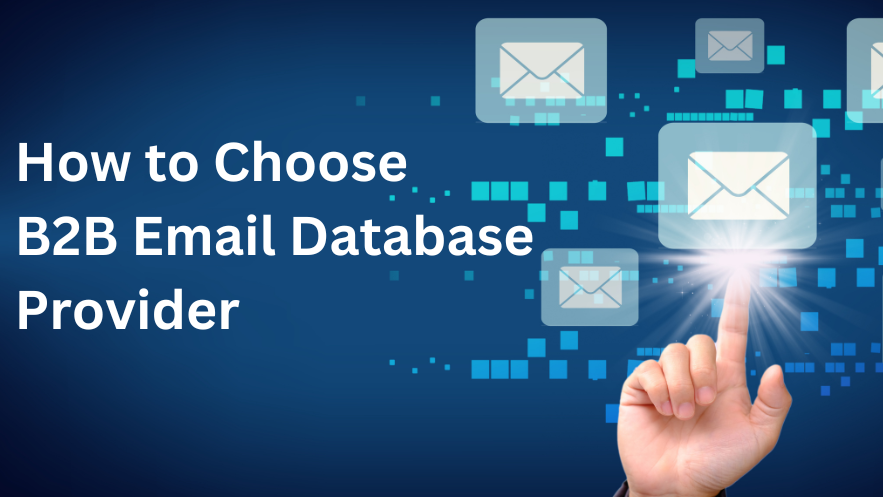Introduction
A well-segmented and targeted email list is the foundation of a successful go-to-market (GTM) strategy. Whether you’re launching a new product, expanding into a new market, or executing an account-based marketing (ABM) campaign, having the right email list ensures you connect with potential customers who are most likely to convert. This blog will walk you through the essential steps to acquire, refine, and leverage a high-quality targeted email list for your GTM strategy.
Why a Targeted Email List Matters
A generic email list may not yield the desired results because:
- It lacks relevance, leading to low engagement.
- Unqualified leads increase bounce rates and unsubscribe rates.
- Poor targeting can damage sender reputation and affect deliverability.
A targeted email list, on the other hand, allows you to:
- Personalize your marketing efforts.
- Increase open and conversion rates.
- Build long-term relationships with the right audience.
Step 1: Define Your Target Audience
Before acquiring an email list, clearly define your Ideal Customer Profile (ICP) and buyer personas. Consider the following factors:
1. Industry and Niche
Identify the industries most likely to benefit from your product or service, such as healthcare, finance, retail, or technology.
2. Company Size
Determine whether your audience consists of small businesses, mid-market companies, or large enterprises.
3. Job Titles and Roles
Who are the key decision-makers? Identify whether you’re targeting CEOs, HR managers, IT directors, or procurement heads.
4. Geographic Location
Specify if your market is local, regional, national, or international.
5. Buying Behavior
Analyze past purchase patterns, pain points, and needs.
Step 2: Choose the Right Email List Provider
Purchasing a high-quality, targeted b2b email list from a reputable provider can save time and effort. When selecting a provider, ensure they offer:
- Verified and updated contacts: Look for a provider that frequently updates their database to remove invalid or outdated emails.
- Customization options: The ability to filter contacts based on industry, job titles, and location.
- Compliance with data regulations: Ensure the provider adheres to GDPR, CAN-SPAM, and other relevant regulations.
- High deliverability rates: Avoid lists with a high percentage of hard bounces.
Step 3: Build an Organic Email List
While purchasing an email list is an option, organically building one ensures better engagement. Some effective ways to do this include:
1. Website Sign-up Forms
Offer free resources like eBooks, whitepapers, or industry reports in exchange for email addresses.
2. Webinars and Events
Host informative sessions and collect attendee details.
3. Social Media Lead Generation
Use LinkedIn Lead Gen Forms, Facebook Ads, and Twitter promotions to capture emails.
4. Content Marketing
Regularly publish blogs, case studies, and research papers that encourage visitors to subscribe.
5. Referral Programs
Encourage existing subscribers to refer colleagues or industry peers.
Step 4: Validate and Clean Your Email List
To ensure high deliverability and avoid spam complaints, regularly validate and clean your email list. Use tools like:
- Hunter.io – Verifies email validity.
- NeverBounce – Identifies inactive or risky emails.
- ZeroBounce – Provides email scoring and validation.
Step 5: Segment Your Email List
Once you have a high-quality list, segmentation allows you to send personalized and relevant messages. Consider these segmentation strategies:
1. Demographic Segmentation
Group contacts based on job title, industry, company size, or location.
2. Behavioral Segmentation
Segment based on email engagement (opens, clicks) and website interactions.
3. Purchase History
Target customers based on previous purchases or inquiries.
4. Lead Score-Based Segmentation
Prioritize high-intent prospects who are more likely to convert.
Step 6: Craft Compelling Email Campaigns
A great email list is only valuable if you use it effectively. Keep these best practices in mind:
1. Write an Attention-Grabbing Subject Line
Your subject line should be short, compelling, and relevant to the recipient.
2. Personalize Your Emails
Use dynamic fields to include the recipient’s name, company, or job title.
3. Provide Value
Share insightful content, industry news, or exclusive offers.
4. Optimize for Mobile
Ensure your emails are mobile-friendly and have a responsive design.
5. Include a Clear Call-to-Action (CTA)
Encourage recipients to take action, whether it’s scheduling a call, downloading a resource, or signing up for a demo.
Step 7: Monitor and Optimize Performance
Track and analyze key email marketing metrics to refine your approach:
- Open Rate – Measures how many recipients opened your email.
- Click-Through Rate (CTR) – Shows how many clicked on your links.
- Bounce Rate – Identifies invalid or inactive emails.
- Conversion Rate – Measures how many recipients completed a desired action.
- Unsubscribe Rate – Helps identify potential issues with messaging or targeting.
Use A/B testing to experiment with different subject lines, content formats, and CTAs.
Conclusion
A targeted email list is a crucial asset for executing a successful go-to-market strategy. By defining your audience, acquiring high-quality contacts, and continuously refining your email campaigns, you can improve engagement and drive business growth. Whether purchasing from a trusted provider or building your list organically, the key is to ensure relevance, accuracy, and compliance with regulations. Start building your targeted email list today and watch your GTM efforts yield better results!



